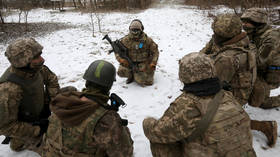Epidemic updates: US orders real-time global disease outbreak feed

US Department of Homeland Security (DHS) wants a real-time feed on outbreaks of infectious diseases worldwide. Small businesses are encouraged to bid for a government contract.
The DHS Office of Health Affairs has announced its intention to stay updated
on the outbreaks of infectious diseases affecting both humans and
animals by having news about them from all parts of the world
coming to a single feed 24 hours per day, 365 days per year.
“The Department of Homeland Security (DHS)… requires a
real-time, open source, bio-surveillance data feed to support
mission objectives of providing earlier warning and enhanced
situational awareness for biological threats of national
concern,” the government solicitation issued on Tuesday
reads.
US government health officials want the real-time data feed to
draw information from at least 25,000 open online sources and to
be updated at least every hour. Diseases alerts are welcome in
the form of emails or RSS feed.
The US government expects the information thus provided to give
details on the time and place of the disease outbreak. The data
should be gathered from news releases published in at least five
different languages (English, Spanish, French, Russian and
Chinese), and be translated into English.
Meanwhile, news of diseases seems to be quick enough to spread
globally these days. A single case of bubonic plague in Kyrgyzstan was enough to make
headlines across world media outlets and also to make some of the
country’s neighbors consider measures to prevent the disease from
spreading.
The outbreak of the latest strain of bird flu, labeled H7N9, was widely covered this
spring, with experts looking into the possibility of a pandemic.
Almost simultaneously the world had its eyes on a new coronavirus (nCoV), similar to SARS, but less
contagious. What caused global concern was the estimate that its
death rate among detected cases was almost 50 percent.
Every time a new virus makes its way into the global media
spotlight, however, skeptics come up with allegations the threats
are being exaggerated by drug companies to increase profits.













